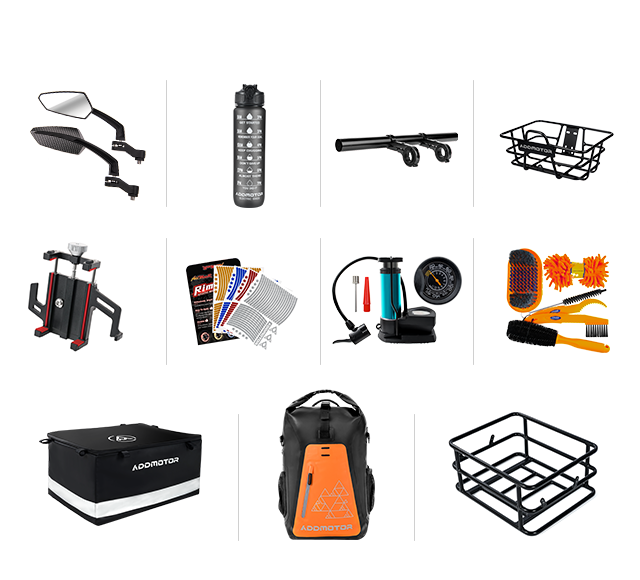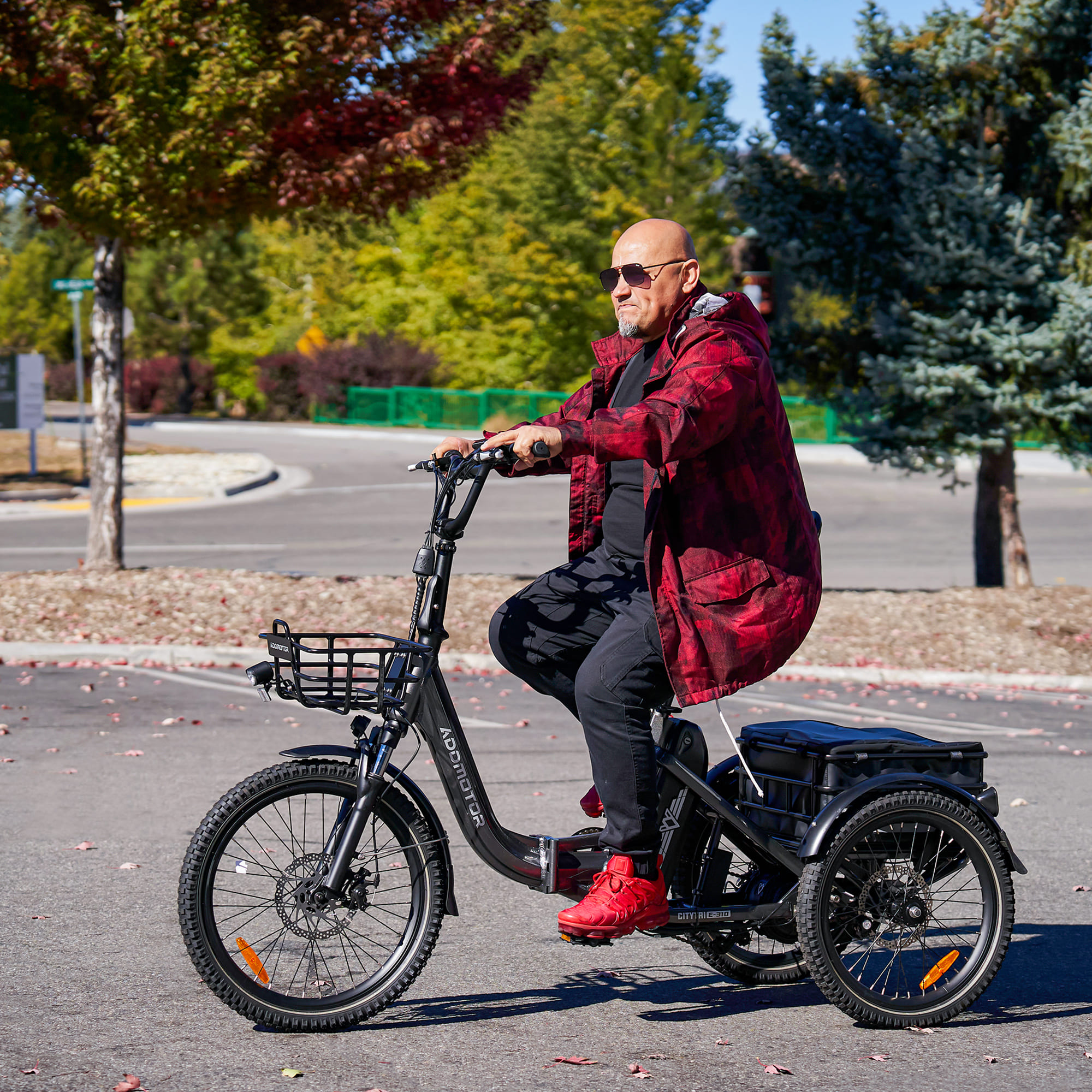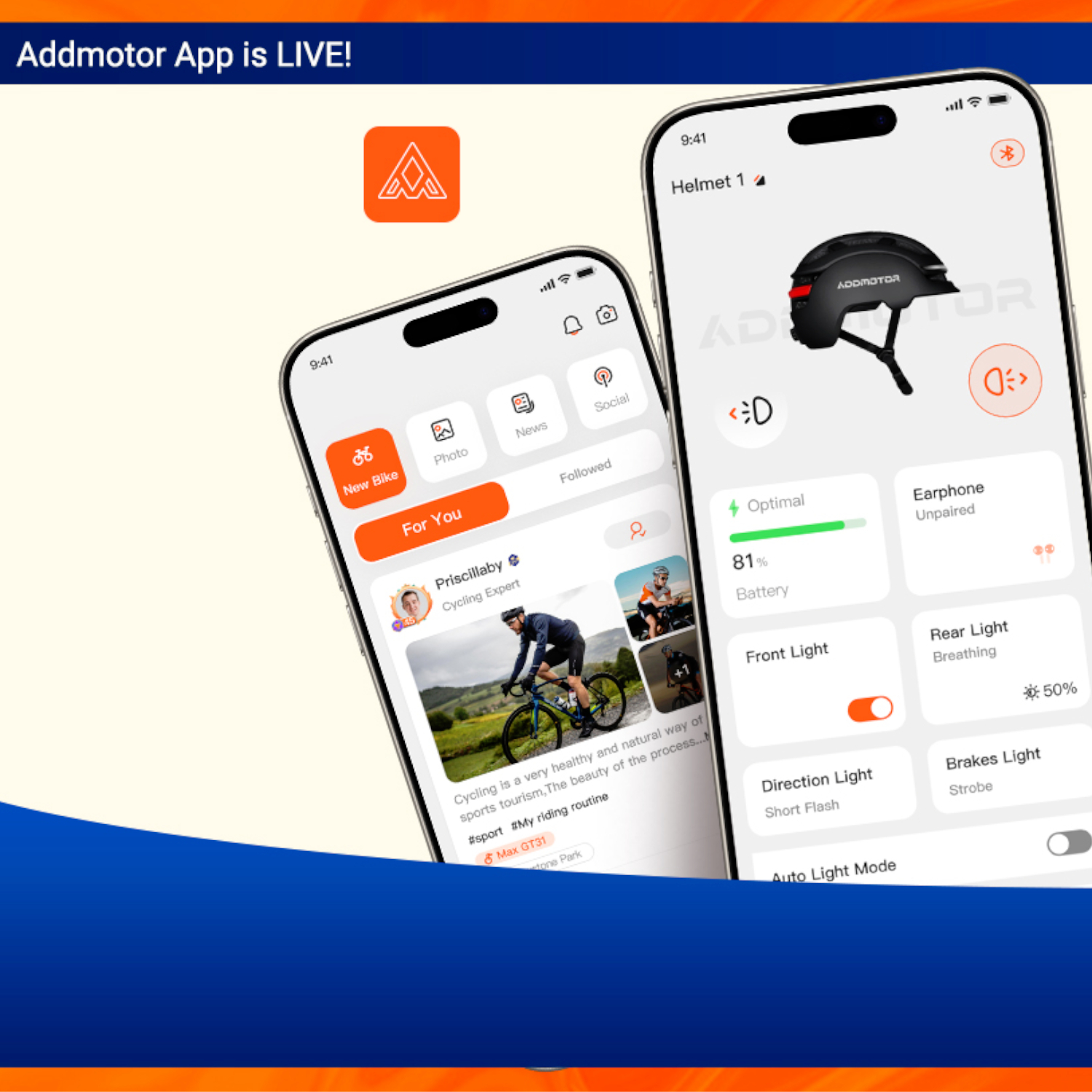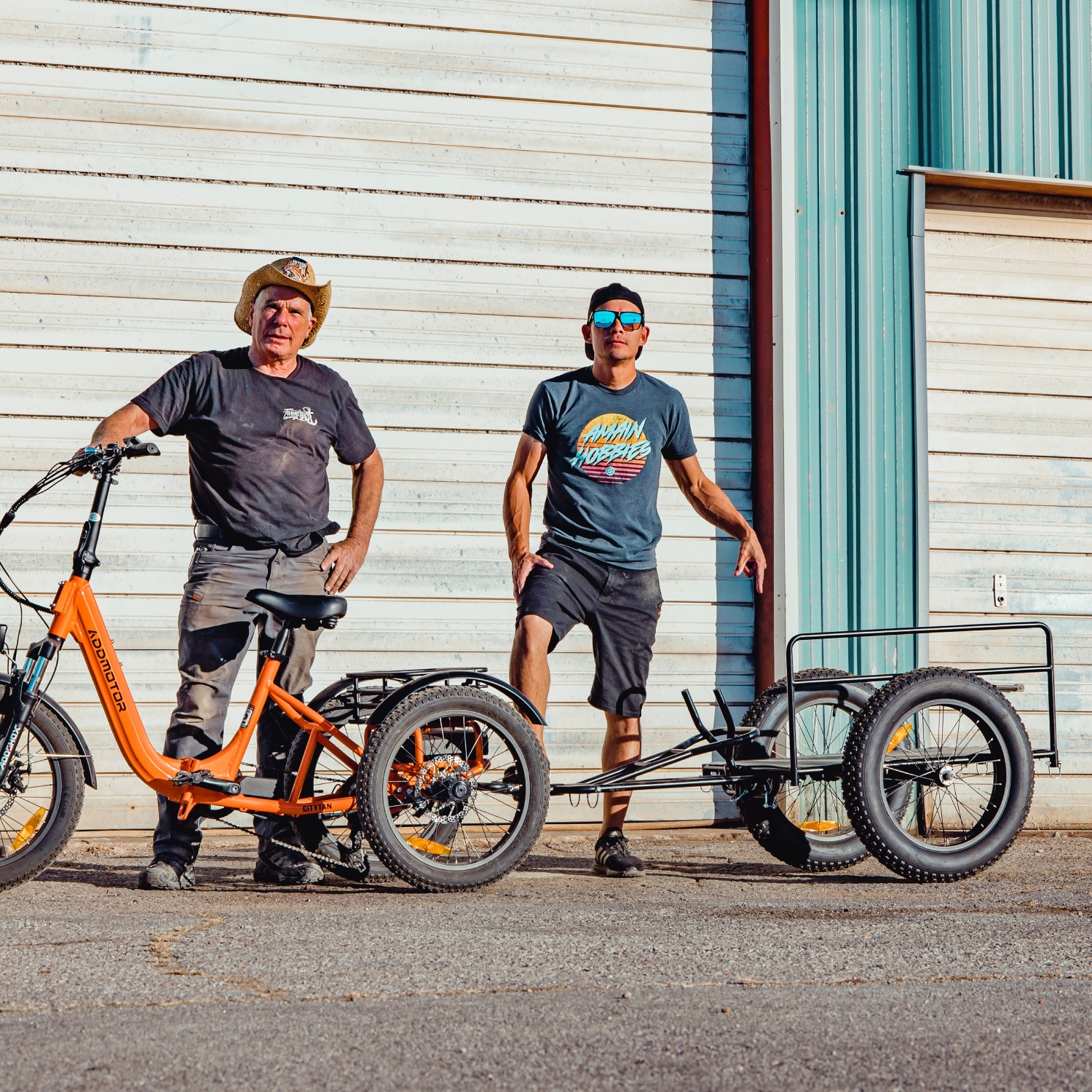Reverse Tricycles vs. Traditional Trikes: A Practical Comparison for Everyday Riders
By ADDMOTOR | 28 August 2025 | 0 Comments
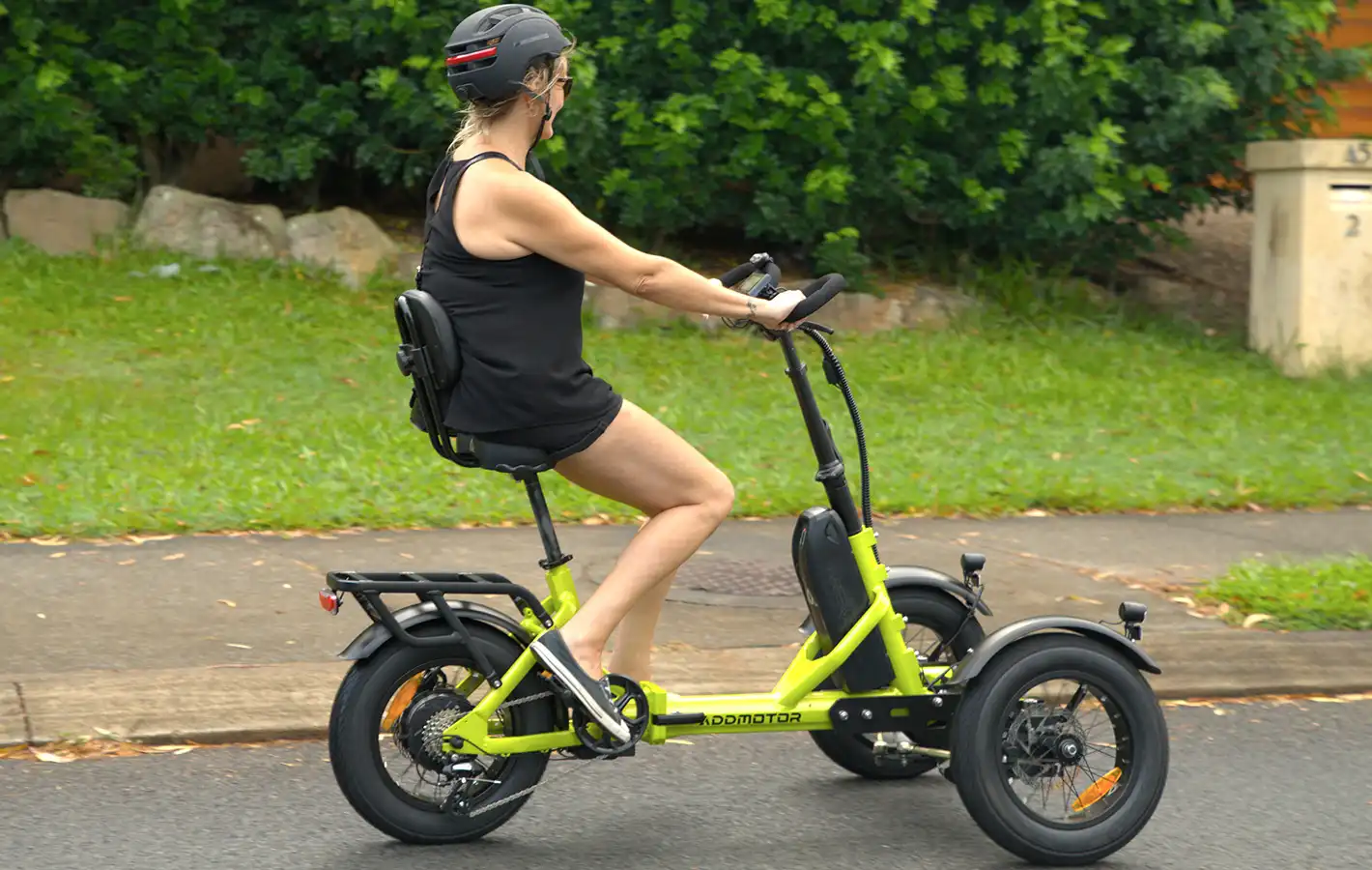
Three-wheeled bicycles, or trikes, are gaining traction as a smart choice for adults who value stability, comfort, and versatility. Whether you're commuting, exercising, or enjoying a leisurely ride, trikes offer a unique blend of function and freedom.
But when it comes to choosing between a reverse tricycle and a traditional trike, it’s not just about looks—it’s about how and where you ride. This guide explores the key differences, pros, and cons of each design to help you find the perfect fit for your lifestyle.
Reverse Tricycles: Performance-Oriented and Agile
Reverse tricycles, often called tadpole trikes, feature two wheels in the front and one in the rear. This layout shifts the center of gravity forward, which significantly improves handling and stability during motion.Design and Functionality
The dual front wheels allow for better weight distribution, especially when cornering. Many reverse trikes use independent suspension systems and disc brakes, making them ideal for riders who want precision and control. Recumbent versions position the rider low to the ground, reducing wind resistance and strain on the back.
Ideal Use Cases
* Urban commuting: Navigating traffic and tight corners is easier with responsive steering.
* Long-distance touring: Recumbent models offer ergonomic support for hours of riding.
* Fitness riding: The aerodynamic posture and efficient pedaling make it suitable for training.
Advantages
* Superior handling: The front-heavy design improves traction and control, especially on downhill slopes or sharp turns.
* Comfortable ride: Recumbent models reduce pressure on the spine and wrists.
* Modern features: Many come with advanced gear systems, electric assist, and customizable frames.
Limitations
* Less intuitive for beginners: The steering and posture may feel unfamiliar at first.
* Stability when stopped: Without a locking mechanism or foot support, the single rear wheel can make the trike feel unstable when stationary.
* Higher cost: Due to components and engineering, reverse trikes are generally more expensive.
Traditional Trikes: Stable, Simple, and Reliable
Traditional trikes, or delta trikes, have one wheel in the front and two in the back. This classic design emphasizes balance and ease of use, making it a popular choice for casual riders and those with mobility concerns.Design and Functionality
The rear wheels provide a wide base of support, making the etrike easy to mount and dismount. Steering is similar to a standard bicycle, which helps new riders feel comfortable quickly. Many models include upright seating and large rear baskets for carrying groceries or gear.
Ideal Use Cases
* Errand running: The rear cargo space is perfect for shopping or transporting items.
* Leisure riding: Upright seating and simple controls make it ideal for relaxed rides.
* Mobility support: Seniors or individuals with balance issues benefit from the stability and accessibility.
Advantages
* Easy to balance: The rear-wheel support keeps the etrike steady even when stopped.
* User-friendly: Familiar steering and upright posture make it accessible to all ages.
* Affordable: Basic models are budget-friendly and require minimal maintenance.
Limitations
* Limited agility: The rear-heavy design can feel sluggish during turns or on uneven terrain.
* Reduced performance: Not built for speed or technical riding.
* Less ergonomic: Upright seating may cause discomfort on longer rides.
Side-by-Side Comparison
| Feature | Reverse Tricycle | Traditional Trike |
| Wheel Configuration | Two front, one rear | One front, two rear |
| Stability (moving) | High | Moderate |
| Stability (stationary) | Moderate | High |
| Handling | Precise, agile | Basic, less responsive |
| Comfort | High (recumbent options) | Moderate (upright only) |
| Cargo Capacity | Limited | High (rear baskets/platforms) |
| Learning Curve | Moderate | Low |
| Price Range | Mid to high | Low to mid |
| Best For | Commuting, touring, fitness | Leisure, errands, mobility support |
Choosing Based on Your Lifestyle
If You Commute DailyReverse trikes are better suited for urban environments. Their responsive steering and braking systems help you navigate traffic safely. Electric assist options can make uphill climbs and longer distances more manageable.
If You Ride for Leisure
Traditional trikes offer a relaxed experience. You can sit upright, pedal at your own pace, and enjoy the scenery. They're ideal for parks, boardwalks, and short neighborhood rides.
If You Need Cargo Space
Traditional trikes often come with large rear baskets or platforms, making them perfect for grocery runs, deliveries, or carrying tools and supplies.
If You Have Mobility Challenges
The stability and ease of mounting make traditional trikes a better fit. Some models even include step-through frames and adaptive accessories for added support.
Cost and Maintenance Considerations
Reverse trikes typically require more special parts and maintenance. Suspension systems, disc brakes, and recumbent frames can be costly to repair or replace. However, they often last longer and perform better under stress.Traditional trikes are simpler mechanically. Repairs are straightforward, and replacement parts are widely available. For budget-conscious riders or those who prefer DIY maintenance, this can be a major advantage.
Final Thoughts
Choosing between a reverse tricycle and a traditional trike isn’t just about specs—it’s about how you want to ride. Reverse trikes offer performance, comfort, and control for active riders and commuters. Traditional trikes provide stability, simplicity, and practicality for leisure riders and those with mobility needs.If possible, test ride both types. Pay attention to how each feels when turning, stopping, and starting. Your ideal trike should match your body, your routine, and your goals—not just your budget.
Leave a Reply
Your email address will not be published.Required fields are marked. *
Latest Stories

